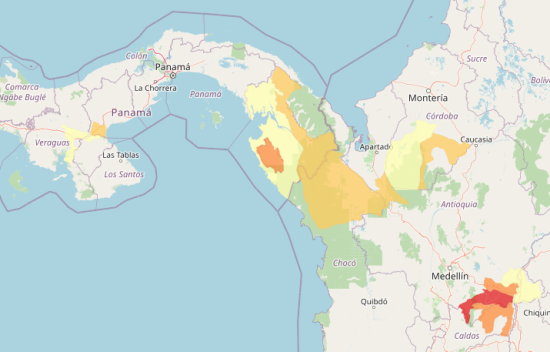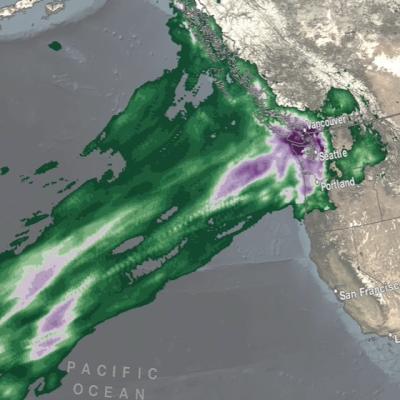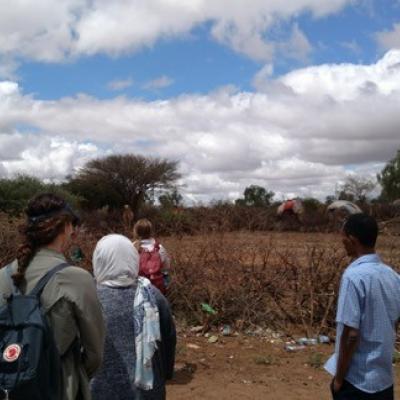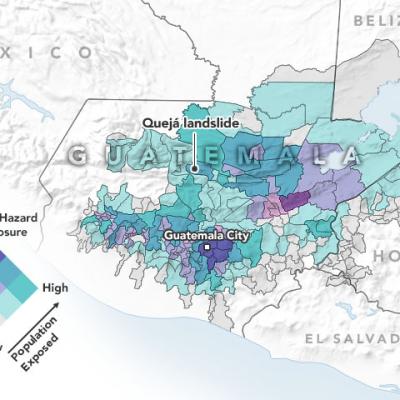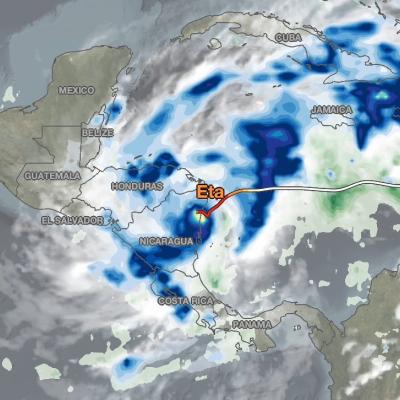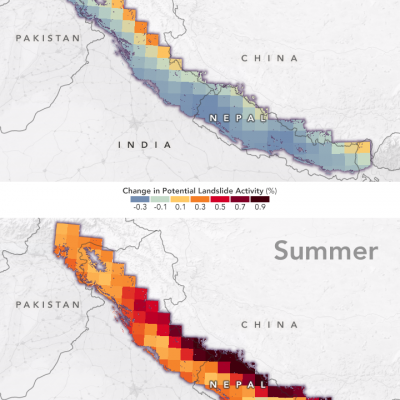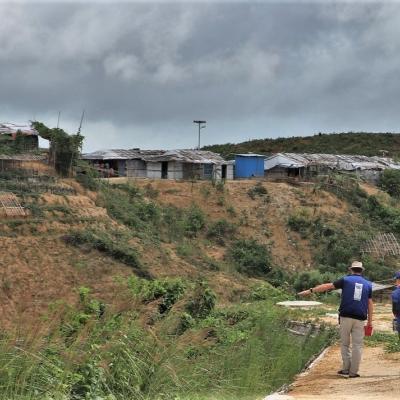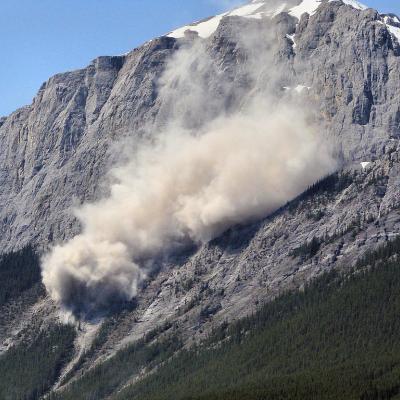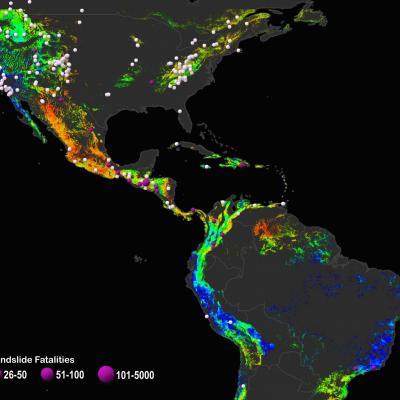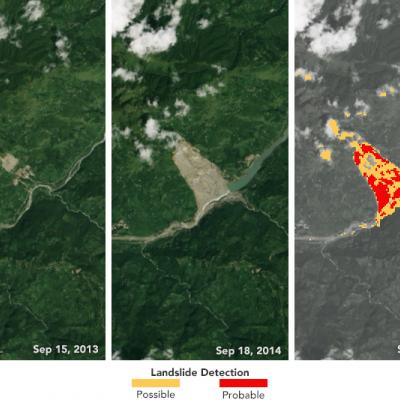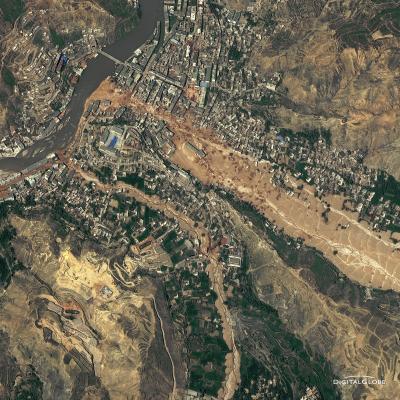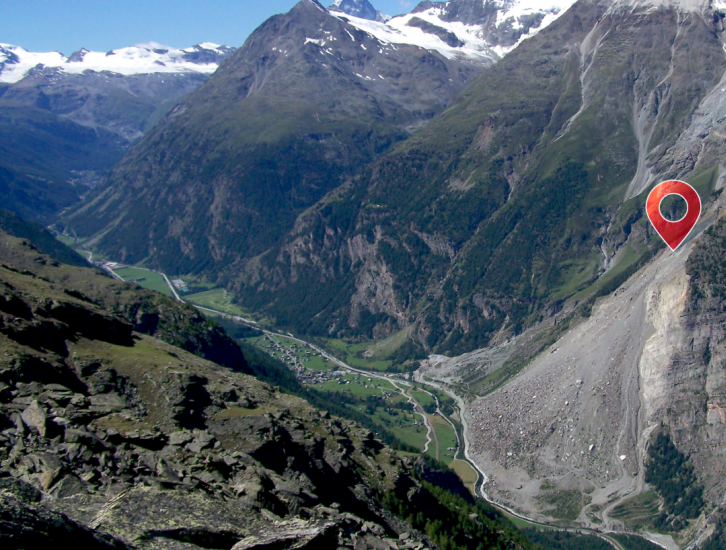
Landslides
Landslides are one of the most pervasive hazards in the world, resulting in more fatalities and economic damage than is generally recognized. Every year they block roads, damage infrastructure, and cause thousands of fatalities. Intense and prolonged rainfall is the most frequent landslide trigger around the world, but earthquakes and human influence can also cause significant and widespread landsliding. Using satellite data, we can identify the conditions under which landslides typically occur, helping to improve monitoring and modeling of these hazards
Rainfall Triggered Landslides
Researchers need accurate and timely rainfall information to better understand and model where and when severe floods, frequent landslides and devastating droughts may occur. GPM's global rainfall data will help to better prepare and respond to a wide range of natural disasters.
This video is public domain and can be downloaded at: http://svs.gsfc.nasa.gov/goto?11091
Modeling and Reporting Landslides
The global Landslide Hazard Assessment for Situational Awareness (LHASA) model was developed to provide situational awareness of landslide hazards for a wide range of users. The model combines GPM near real-time precipitation data with a global landslide susceptibility map to generate estimates of where and when rainfall-triggered landslides are likely to occur around the world. Information on landslide reports is available on the Cooperative Open Online Landslide Repository (COOLR), which combines data from NASA's Global Landslide Catalog, other landslide inventories and contributions from citizen scientists via the Landslide Reporter Application.
An example of the LHASA 2.0 landslide nowcast in South and Central America. Red indicates larger populations exposed to landslide hazard. Orange and yellow indicate lesser population exposure. Image from Landslide Viewer.
LHASA 2.0 was recently released, which improves upon LHASA 1.1 by incorporating landslide inventories from around the world within a machine learning framework that estimates the relative probability of landslide occurrence. LHASA 2.0 also estimates the potential exposure of human populations and roads to landslide hazard and maps the basins likely to experience post-fire debris flows.
Learn More:
- Landslides @ NASA Homepage
- Landslide Reporter & the Cooperative Open Online Landslide Repository (COOLR)
- Landslide Hazard Assessment for Situational Awareness (LHASA) Model
- Landslide Susceptibility Map
- Global Landslide Catalog (GLC)
- Semi-Automatic Landslide Detection (SALaD)
- Publications and Other Resources


